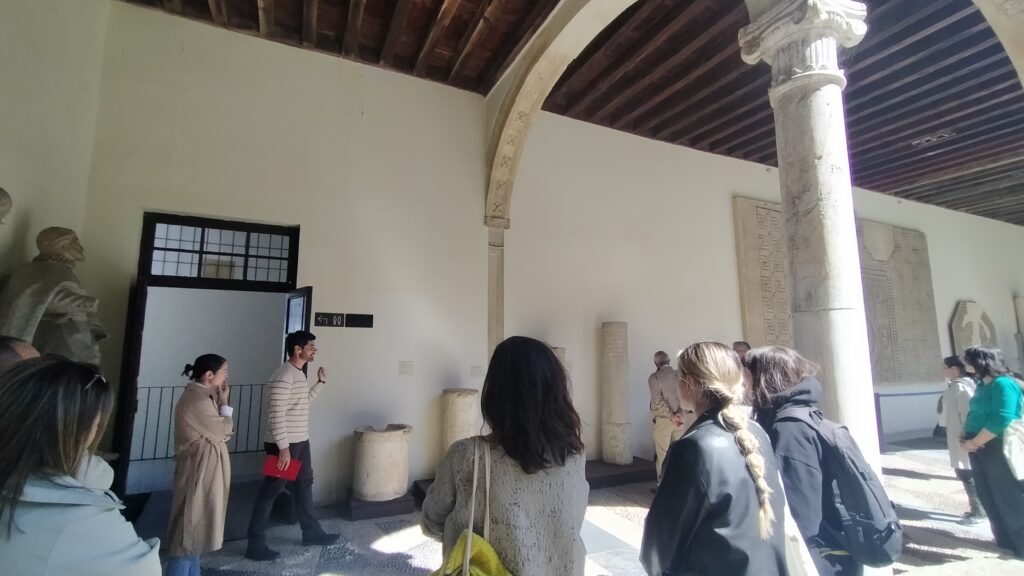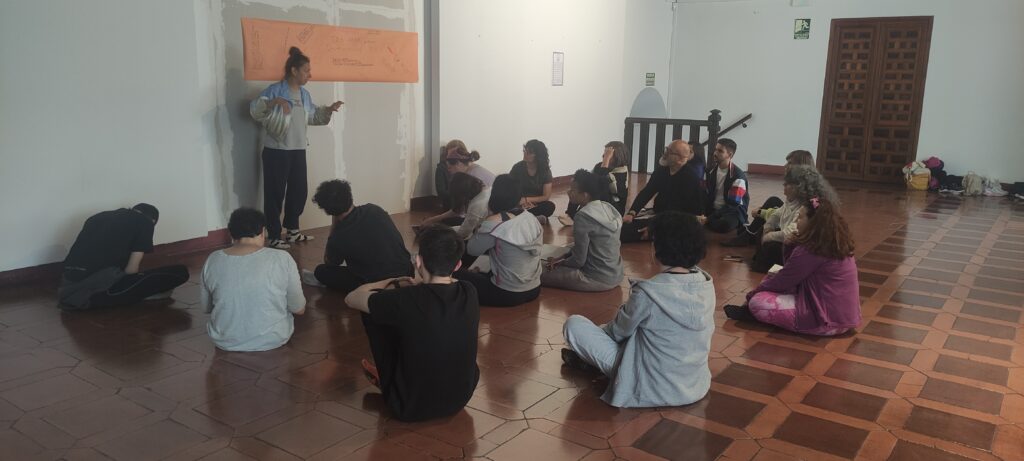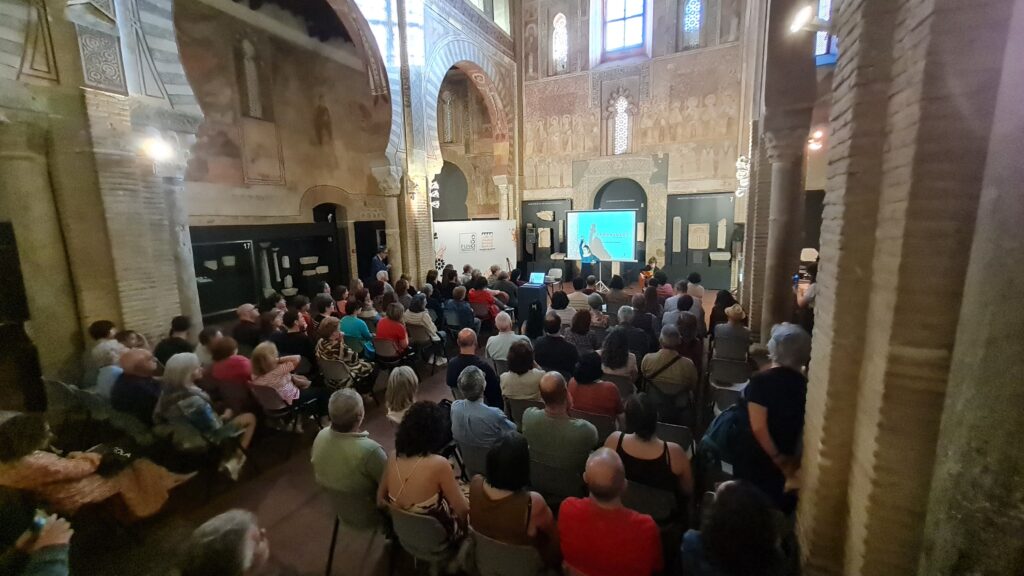Communications
The Museum of Santa Cruz and FUNCI together for Toledo’s Islamic heritage
The Museum of Santa Cruz and the Centre for Studies on Islamic Toledo (Islamic Culture Foundation), after carrying out a first collaborative activity (the ‘piece of the month’ in the Taller del Moro), continue to work together to raise awareness of the Andalusian legacy in Toledo.
During the months of April and May, three more activities were held in the same line of action. In connection with Book Day, 23 April, a workshop on Andalusian epigraphy and writing was organised. Subsequently, thanks to the collaboration with the researcher and dancer Patricia Álvarez, both a workshop on Ibn Arabí and a dance conference on al-Andalus were organised.
Epigraphy and Andalusian writing workshop
The first of the activities took place in the courtyard of the Museum of Santa Cruz and the didactic area of that institution. It had two sessions (23 and 26 April), one focused on adults and the other on children, and was given by Angelina Gutiérrez Almenara (Arabic translator, until recently a researcher at the Toledo School of Translators) and Sergio Isabel Ludeña (archaeologist and scientific coordinator at FUNCI).
First, in the courtyard of the museum, general explanations were given about several pieces from the Taifa period with epigraphic motifs: two well parapets from mosques and a series of cipos (funerary columns) from cemeteries in Toledo. In this way, participants had the opportunity to learn both the contexts of these elements and the basic characteristics of Arabic epigraphy, especially simple kufic and flowery kufic.

Secondly, in the didactic classroom, a brief introduction was given to the Arabic language and writing, especially the particularities of the latter. Throughout the workshop, participants were also introduced to the different types of calligraphy and were able to take home as a souvenir a bookmark with Arabic characters that they had made themselves.

Workshop The Lived Experience. Ibn Arabí, movement and dance
The activity took place in the Toisón Hall (Museum of Santa Cruz) on 27 April, and was given by Patricia Álvarez. The workshop aimed to be an approach to Ibn Arabí’s philosophy through movement.
Patricia Álvarez is a dancer and independent researcher of the language of the body and gesture in the cultural traditions of the Mediterranean area. She has been trained in different dances – arabic, flamenco, contemporary dance, ballet, african-mandinga dance -, pilates, yoga and dance/theatre, and has a degree in Arabic and Islamic Philology (Universidad Autónoma de Madrid). She develops her work in different fields: teaching through courses, mediation projects and coaching in movement; dissemination in the form of conferences and writings; stage creation, with two active projects, ‘Kereshmeh’ and ‘mujereson’; and research, which is reflected in two proposals: ‘Cuerpos que se desplazan’ and ‘Alándalusoy’, an approach from the body to the historical space of Al-Andalus and the concept of the Andalusian.

In this workshop, through various exercises performed with the body (traditional dance techniques, breathing, conscious movements, observation of stillness and space/time), the participants had the opportunity to approach Andalusian Sufism in a different way. Dance was the channel to enter into a breathing, a recreation of the barzakh, that is, the space between worlds where everything is possible.
Alándalusoy dance conference
The last of the activities was held on 24 May in the church of San Román (which houses the Museum of Councils and Visigothic Culture), one of the subsidiaries of the Museum of Santa Cruz. The dance conference was the presentation of the Alándalusoy project, a research and dissemination project by Patricia Álvarez, an Arabist and dancer who is an expert in different body traditions of the Mediterranean axis.
The artist arrived in Toledo after her return from Mauritania, where the Spanish Embassy counted on her to forge an encounter between the traditional dances of both countries. Accompanied, on this occasion, by the guitarist and composer Antonia Jiménez Arias, a renowned female figure on the current flamenco scene, she proposed a piece that reflects on the perception of the history and physical spaces of the Andalusian period through the body itself: in what part of our body does al-Andalus inhabit?
This project by Patricia Álvarez was born in 2021 and took shape with an artistic residency granted to her by Casa Árabe in Córdoba to collect material in this city. She then extended her research to the area of El Andévalo and, finally, to the foundational stage of the city of Madrid.
The church of San Román, given the Islamic influence in its architectural and decorative language, was an enviable setting in which the dancer, the guitarist and the audience entered into conversation.

With this series of proposals, the Islamic Culture Foundation once again supports the programme of cultural activities of the Museum of Santa Cruz. Both institutions continue their commitment to highlighting the importance of the Islamic footprint present in Toledo and in the collections of the provincial museum, in order to bring them closer to society with rigour and from individual experience.
The great reception of these activities is further proof of the interest that the past of al-Andalus arouses among the public.
This article is available in Español.


